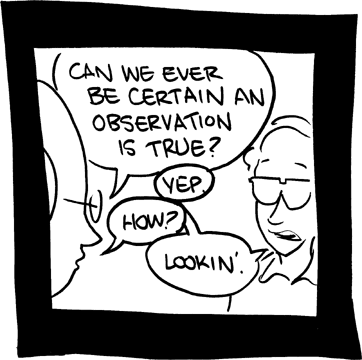Previously Alex Altair and I published a post on the applications of chaos theory, which found a few successes but mostly overhyped dead ends. Luckily the comments came through, providing me with an entirely different type of application: knowing you can’t, and explaining to your boss that you can’t.
Knowing you can’t
Calling a system chaotic rules out many solutions and tools, which can save you time and money in dead ends not traveled. I knew this, but also knew that you could never be 100% certain a physical system was chaotic, as opposed to misunderstood.
However, you can know the equations behind proposed solutions, and trust that reality is unlikely to be simpler[1] than the idealized math. This means that if the equations necessary for your proposed solution could be used to solve the 3-body problem, you don’t have a solution.
[[1] I’m hedging a little because sometimes reality’s complications make the math harder but the ultimate solution easier. E.g. friction makes movement harder to predict but gives you terminal velocity.]
I had a great conversation with trebuchet and math enthusiast Hastings Greer about how this dynamic plays out with trebuchets.
Note that this was recorded in Skype with standard headphones, so the recording leaves something to be desired. I think it’s worth it for the trebuchet software visuals starting at 07:00
My favorite parts:
- If a trebuchet requires you to solve the double pendulum problem (a classic example of a chaotic system) in order to aim, it is not a competition-winning trebuchet. ETA 9/22: Hastings corrects this to “If a simulating a trebuchet requires solving the double pendulum problem over many error-doublings, it is not a competition-winning trebuchet”
- Trebuchet design was solved 15-20 years ago; it’s all implementation details now. This did not require modern levels of tech, just modern nerds with free time.
- The winning design was used by the Syrians during Arab Spring, which everyone involved feels ambivalent about.
- The national pumpkin throwing competition has been snuffed out by insurance issues, but local competitions remain.
- Learning about trebuchet modeling software.
Explaining you can’t
One reason to doubt chaos theory’s usefulness is that we don’t need fancy theories to tell us something is impossible. Impossibility tends to make itself obvious.
But some people refuse to accept an impossibility, and some of those people are managers. Might those people accept “it’s impossible because of chaos theory” where they wouldn’t accept “it’s impossible because look at it”?
As a test of this hypothesis, I made a Twitter poll asking engineers-as-in-builds-things if they had tried to explain a project’s impossibility to chaos, and if it had worked. The final results were:
- 36 respondents who were engineers of the relevant type
- This is probably an overestimate. One respondee replied later that he selected this option incorrectly, and I suspect that was a common mistake. I haven’t attempted to correct for it as the exact percentage is not a crux for me.
- 6 engineers who’d used chaos theory to explain to their boss why something was impossible.
- 5 engineers who’d tried this explanation and succeeded.
- 1 engineer who tried this explanation and failed.
5/36 is by no means common, but it’s not zero either, and it seems like it usually works. My guess is that usage is concentrated in a few subfields, making chaos even more useful than it looks. My sample size isn’t high enough to trust the specific percentages, but as an existence proof I’m quite satisfied.
Conclusion
Chaos provides value both by telling certain engineers where not to look for solutions to their problems, and by getting their bosses off their back about it. That’s a significant value add, but short of what I was hoping for when I started looking into Chaos.













I was confused about this part of your comment because the post directly talks about this in the conclusion.
The "off-site footnote" you're referring to seems to just be saying "The result is a pretty boring game. However, some of these ramps release extra balls after you have used them a few times. My guess is that this is the game designer trying to reintroduce chaos to make the game more interesting again." which is just a minor detail. AFAICT pros could score lots of points even without the extra balls.
(I'm leaving this comment here because I was getting confused about whether there had been major edits to the post, since the relevant content is currently in the conclusion and not the footnote. I was digging through the wayback machine and didn't see any major edits. So trying to save other people from the same confusion.)